You might think that loyalty is a uniquely human trait, with our complex emotions and deep-rooted connections. But if you’ve ever taken a closer look at the animal kingdom, you’ll quickly realize that many animals form bonds just as strong as ours. From unlikely pairings to lifelong partnerships, these animals show that friendship and loyalty are universal connections. Here are 15 ways animals demonstrate that loyalty isn’t just reserved for us humans.
1. Dogs And Cats: Rivalry Turned To Friendship
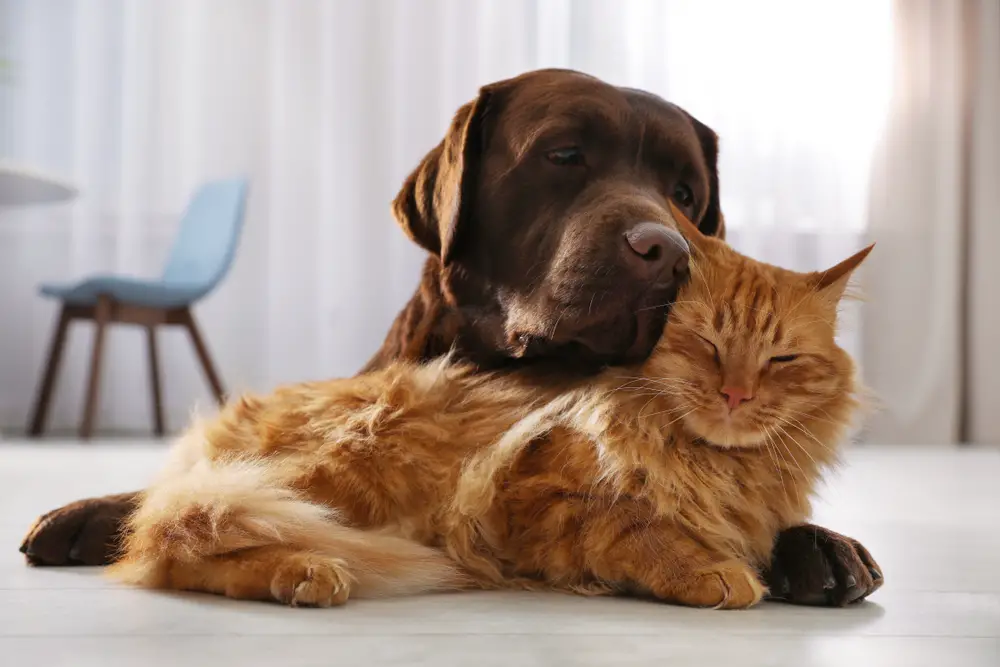
It’s a classic trope that dogs and cats don’t get along. Yet, when raised together, these furry companions often defy expectations by forming strong, supportive friendships. Studies, like the one from Dr. Jessica Vogelsang, a veterinarian, reveal that dogs and cats can communicate and understand each other’s body language surprisingly well, which helps them bond. When you witness a dog and cat cuddling or playing together, it becomes clear that their initial rivalry is not inherent but rather based on individual personalities. Watching them look out for one another proves that loyalty transcends species lines.
Their friendships often start with mutual curiosity and gentle play, laying the groundwork for a lasting bond. Over time, these interactions build trust, leading to moments of unexpected companionship, like sharing a sunny spot or curling up during a nap. By living together, dogs and cats learn to interpret each other’s signals, from a wagging tail to a purring nuzzle. Their friendship blossoms, showing us that understanding and patience are key to loyalty. So, maybe it’s time to reconsider the age-old belief that dogs and cats can’t be friends.
2. Dolphins: Lifelong Bonds In The Ocean
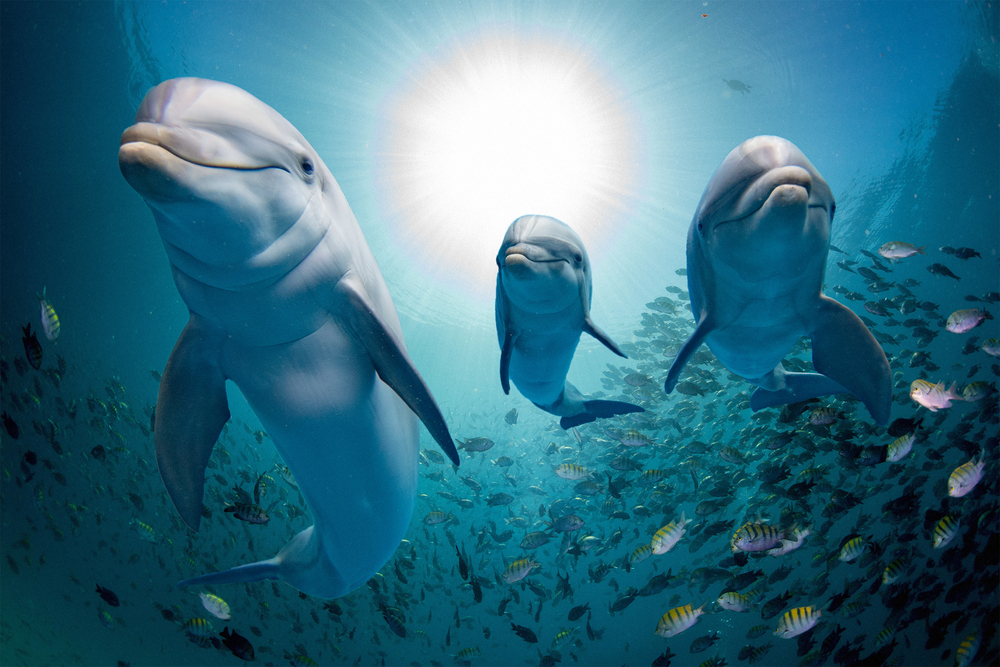
Dolphins are known for their intelligence and playful nature, but their loyalty to their peers is truly remarkable. They form complex social structures, similar to human friendships, where they stay connected with the same pod members for years. These friendships are crucial for survival, as dolphins rely on each other for protection, hunting, and learning. Their loyalty is evident when they work together to corral fish or when they come to the aid of an injured pod member. The consistent support they offer one another is a testament to their strong, enduring bonds.
Much like humans, dolphins have best friends within their pods with whom they spend most of their time. They engage in synchronized swimming, play with one another, and even have specific calls to communicate with their close companions. This complex communication and social interaction are key elements that strengthen their relationships. When a dolphin loses a friend, it can show signs of grief, highlighting the depth of their emotional connection. Observing dolphins in their natural habitat showcases just how deep and genuine their loyalty runs.
3. Elephants: Matriarchal Memory Keepers
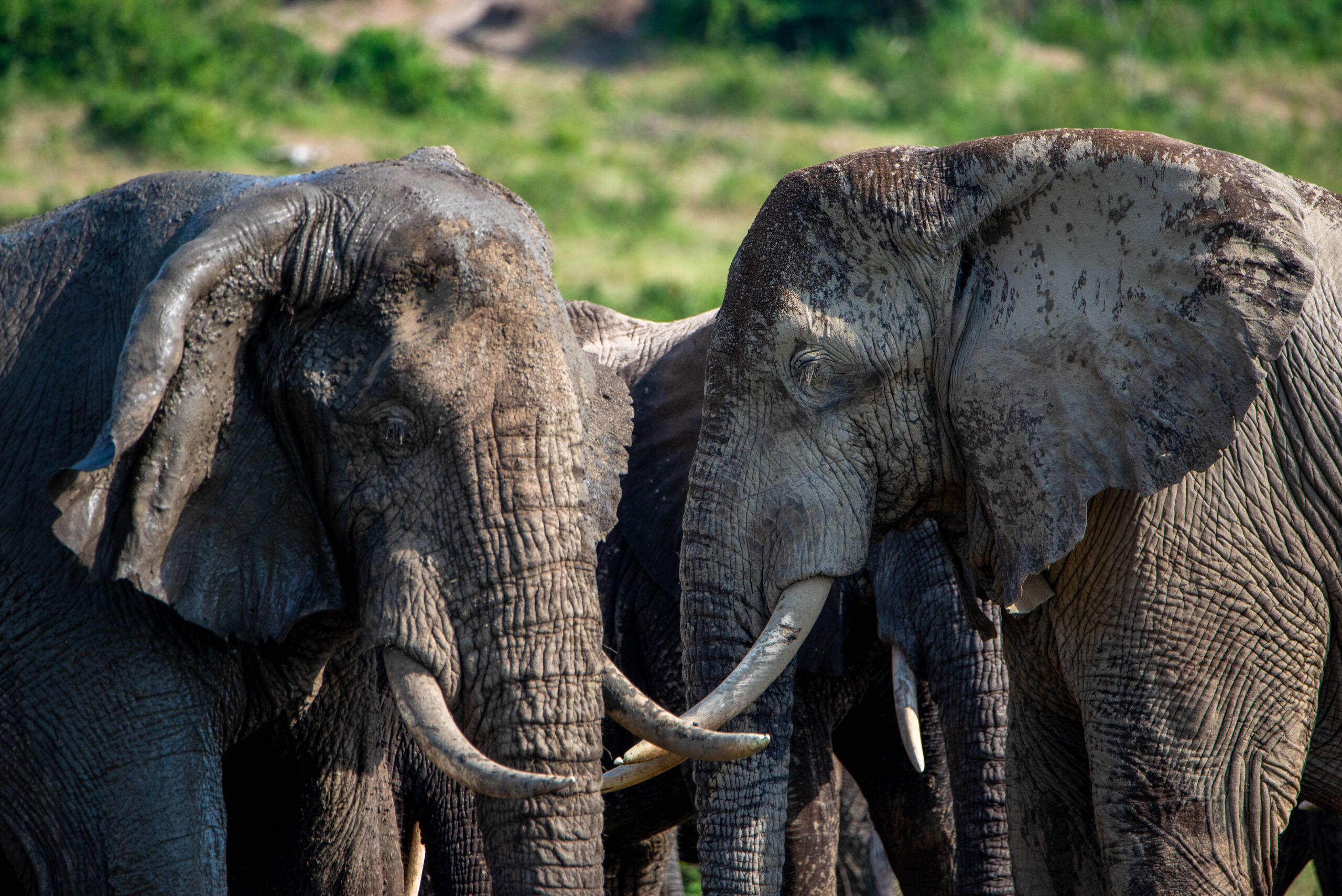
Elephants are famous for their memory, which plays a crucial role in their relationships and loyalty. The matriarch, usually the oldest and wisest female, leads her family with remarkable memory and leadership skills. According to research by Dr. Joyce Poole, an elephant behavioral expert, elephants use their memories to recognize and remember friends and family members even after long separations. They demonstrate loyalty by staying with their family group for life, supporting each other through challenges and changes. Their bonds are not just restricted to family; elephants also form friendships with non-relatives, further showcasing their loyalty.
When a member of the herd falls ill or is injured, the group rallies around to provide support and protection. They mourn their dead, showcasing a profound understanding of loss and grief. This deep sense of empathy and connection highlights their commitment to each other. Their group dynamics are built on trust, cooperation, and mutual respect, which are the foundational elements of loyalty. The emotional depth elephants display through their interactions is a powerful reminder of the complexities of animal friendships.
4. Wolves: Packs Of Loyalty
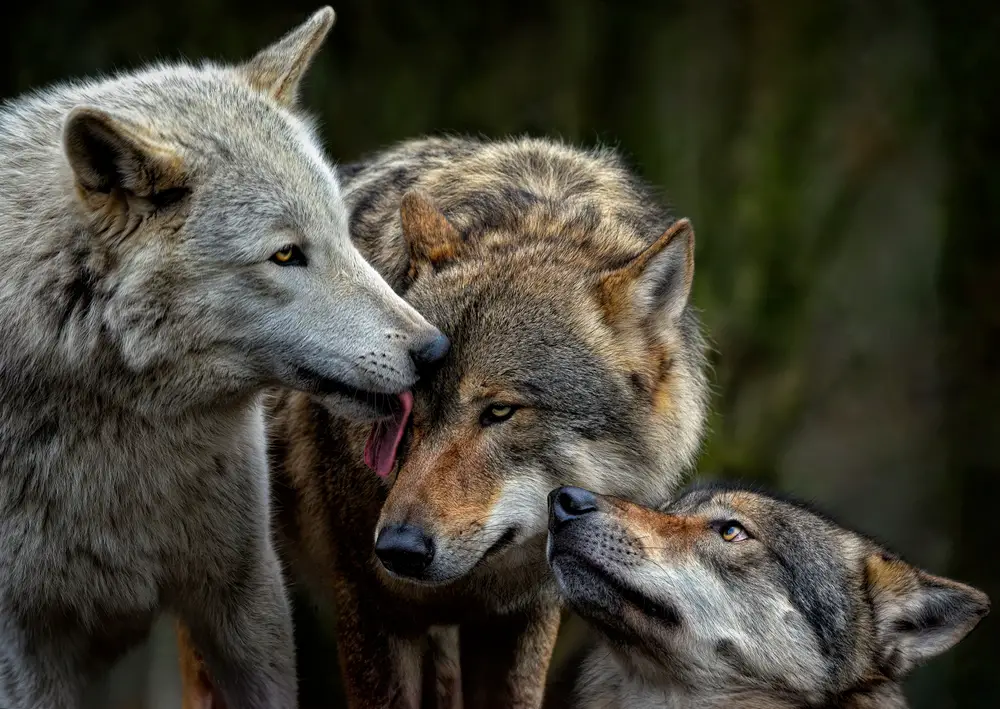
Wolves are the ultimate team players, living and hunting in packs led by an alpha pair. Their social structure is built on loyalty, with each member playing a specific role to ensure the pack’s survival. Hunting requires precise coordination, and wolves demonstrate an incredible ability to communicate and work together. This cooperation and teamwork highlight their commitment to one another and the pack’s overall success. By staying together, wolves can protect their territory and support each other in times of need, showcasing the strength of their bonds.
The pack is more than just a group; it’s a family with deep connections and responsibilities. Young wolves learn vital survival skills from older pack members, forming an intergenerational bond based on teaching and learning. Loyalty is evident when wolves share food, care for pups, and protect each other from threats. Their relationships are rooted in trust and mutual support, and they thrive because of this unity. The way wolves interact within their pack demonstrates that loyalty is essential for both survival and building strong, lasting relationships.
5. Birds Of A Feather: Feathered Friends
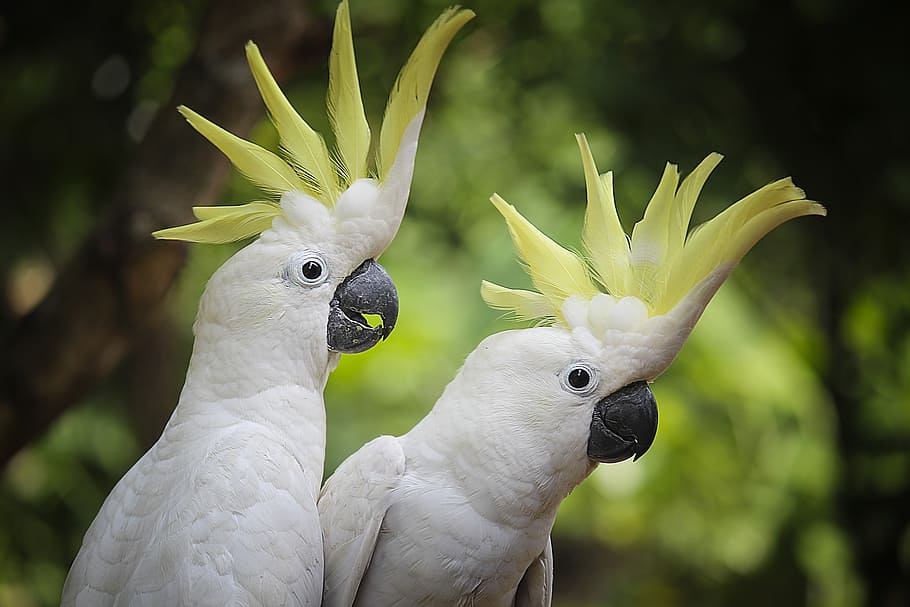
Birds often form tight-knit groups, whether they’re migratory flocks or lifelong mating pairs. Some bird species, like parrots and crows, are known for their intelligence and social nature, forming deep bonds with their partners or flock members. According to research by Dr. Irene Pepperberg, an expert on animal cognition, parrots can display remarkable levels of empathy and understanding, reflecting their strong emotional bonds. The loyalty they show is evident in their cooperative behavior, such as shared nesting duties and coordinated flight patterns. Whether it’s a pair of lovebirds preening each other or a flock of starlings moving as one, their unity is undeniable.
Many birds mate for life, showcasing an unwavering commitment to their partners. These relationships are built on mutual respect, trust, and care, with both partners playing active roles in raising their offspring. In flock dynamics, birds rely on each other for safety, as a larger group can better spot predators and find food sources. Their ability to work together in harmony highlights the strength of their social connections. Observing birds in action provides clear evidence of their loyalty, transcending the individual for the good of the group.
6. Otters: Holding Hands For Safety

Otters are not only adorable but also incredibly loyal to their family groups. One of their most endearing behaviors is holding hands, or “rafting,” to keep from drifting apart while sleeping in the water. This simple act of connection ensures that the group stays together, emphasizing their commitment to each other. Their social nature is also evident in the way they play and communicate, strengthening their bonds. By sticking close to one another, otters demonstrate that loyalty is about staying connected, even when the current tries to pull you apart.
Family groups of otters often consist of parents and their offspring, with older siblings helping to care for the younger ones. This cooperative behavior not only ensures the survival of the family but also fosters deep bonds of trust and reliance. Otters teach each other crucial survival skills, such as finding food and using tools, further solidifying their relationships. Their playful interactions are more than just fun; they are vital for social bonding and emotional well-being. Watching otters play and support each other in their watery world is a heartwarming reminder of the importance of sticking together.
7. Horses And Their Herds: Trust And Communication
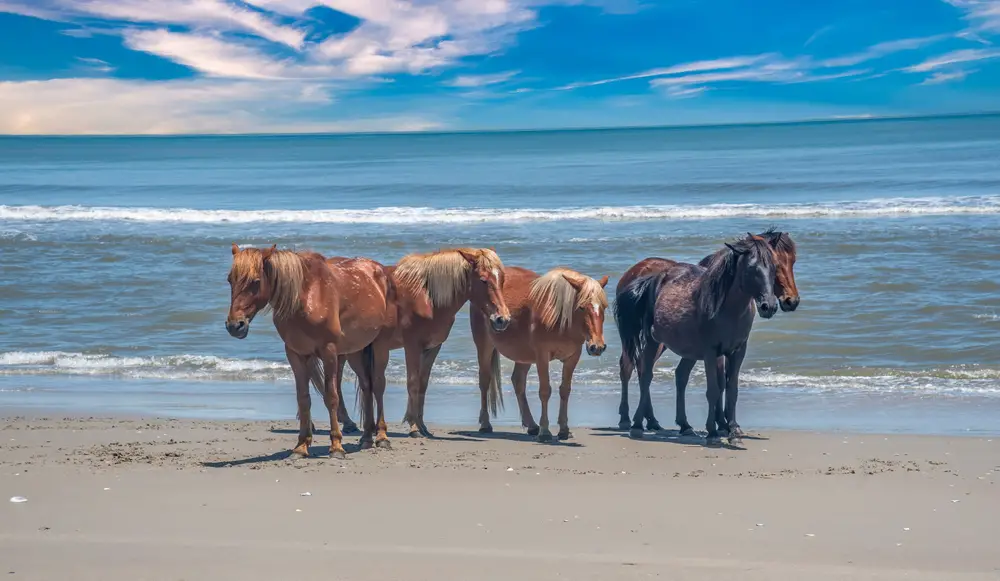
Horses are highly social animals that rely on strong bonds within their herds for safety and companionship. A study conducted by Dr. Martine Hausberger highlights how horses use vocalizations and body language to communicate, reinforcing their social bonds. Within a herd, horses form friendships that go beyond mere survival, providing comfort and security. These relationships are built over time, with horses often grooming each other and standing close for companionship. Their loyalty is demonstrated through their protective nature, always being alert to danger and ready to defend their herd.
The social dynamics within a horse herd are fascinating, with certain individuals emerging as leaders based on experience and wisdom. Young horses learn from older herd members, gaining knowledge and social skills essential for their development. Loyalty is a key component of these relationships, as horses rely on each other for support and companionship. When you see horses grazing peacefully together, it’s a testament to their deep-rooted bonds. By valuing each other’s presence, horses show that loyalty is a natural and essential part of their lives.
8. Penguins: Partners For Life
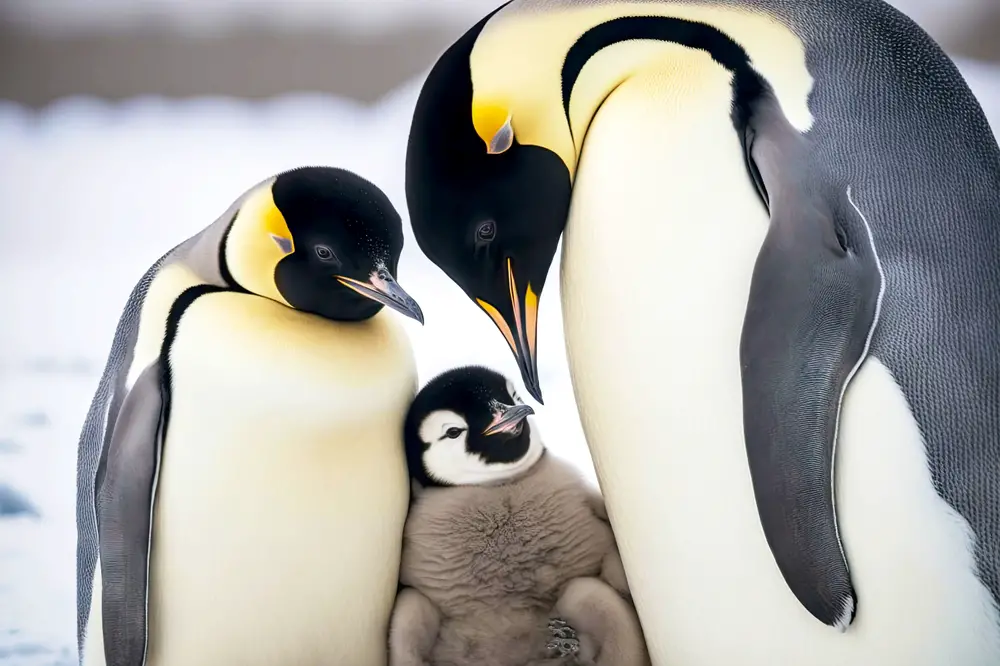
Penguins are often associated with loyalty due to their lifelong partnerships. Once they find a mate, many penguin species stay together through thick and thin, raising their young in harsh conditions. This commitment to their partners and offspring showcases a remarkable level of devotion and teamwork. They take turns incubating eggs and hunting for food, ensuring their family’s survival even in the most challenging environments. The dedication penguins show to their partners is a poignant example of loyalty that goes beyond mere instinct.
During the breeding season, penguins engage in elaborate courtship rituals, strengthening their bond as a couple. These acts of affection and cooperation lay the foundation for a successful partnership. Even when apart, penguins remember their mate’s call, reuniting after long periods of separation. Their relationship is marked by trust, with each partner fulfilling their role to support the family. The loyalty penguins display is not just about survival; it’s about thriving together in a cold, unforgiving world.
9. Meerkats: Sentinels Of The Savannah
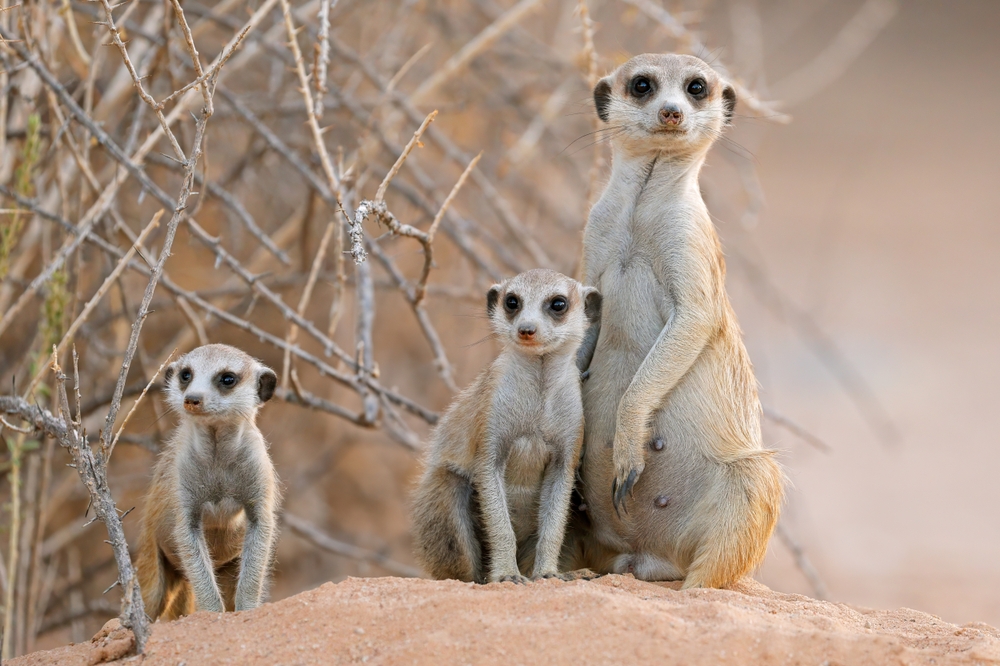
Meerkats are known for their cooperative lifestyle, living in tight-knit family groups called mobs. These charismatic creatures show loyalty through their vigilant behavior, taking turns acting as sentinels to protect the group from predators. Their social structure relies heavily on trust and communication, with each member playing a vital role in the community’s well-being. By working together, meerkats create a safe and nurturing environment for their young. Their commitment to each other is a testament to the power of loyalty and teamwork.
Within the mob, meerkats share responsibilities, such as babysitting pups and digging for food. This cooperative behavior ensures that everyone in the group is cared for and protected. The trust they place in one another is evident when a meerkat stands guard, knowing that the rest of the mob will heed its warning calls. Their strong social bonds are forged through consistent interaction and shared experiences. By supporting each other, meerkats exemplify the benefits of loyalty and collaboration in the wild.
10. Lions: Pride And Protection
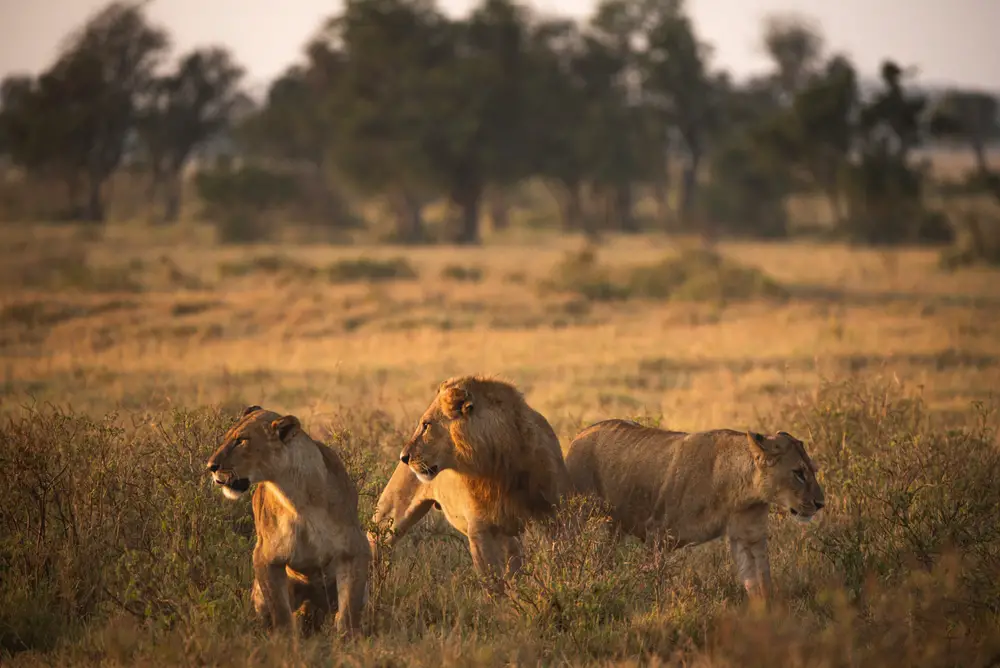
Lions are not only the kings of the jungle but also masters of loyalty within their prides. A lion pride consists of related females and their offspring, with a few males leading the group. These social units are bonded by strong familial ties, with lionesses working together to hunt and raise their cubs. The loyalty within a pride is evident in their cooperative hunting strategies and protective nature. Lions rely on each other for survival, forming a formidable team that thrives on trust and unity.
The bonds within a pride are strengthened by the lionesses, who often remain with their birth group for life. Their loyalty is seen in the way they share responsibilities, from hunting to caring for the young. Male lions also play a crucial role in protecting the pride from external threats, showcasing their commitment to their family’s safety. The close-knit relationships within the pride ensure that every member is looked after and supported. By working together, lions demonstrate that loyalty is key to their strength and success.
11. Chimpanzees: Close-Knit Communities
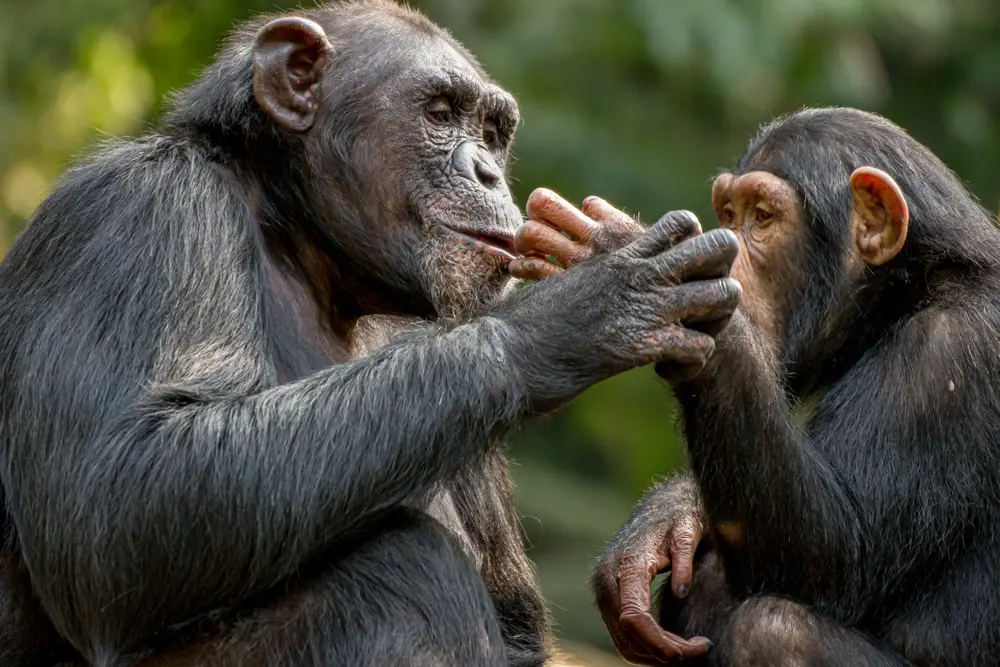
Chimpanzees, our closest relatives, live in complex social structures characterized by loyalty and cooperation. Their communities are built on intricate relationships, with individuals forming strong bonds through grooming, playing, and sharing food. This social behavior reinforces trust and unity within the group, essential for their survival. Chimpanzees demonstrate loyalty by supporting one another during conflicts and caring for injured or sick members. Their deep connections are a reflection of their intelligence and emotional capacity.
The social dynamics of chimpanzee communities are fascinating, with individuals forming alliances that can last a lifetime. These relationships are based on mutual benefit, where each member supports others in times of need. Grooming, a common activity among chimpanzees, is a key way to strengthen bonds and show affection. In times of danger, chimpanzees come together to protect their community, showcasing their loyalty and commitment to one another. Their interactions provide a window into the complexities of animal friendships and the importance of loyalty in their social lives.
12. Ants: Tiny Workers With Big Loyalty
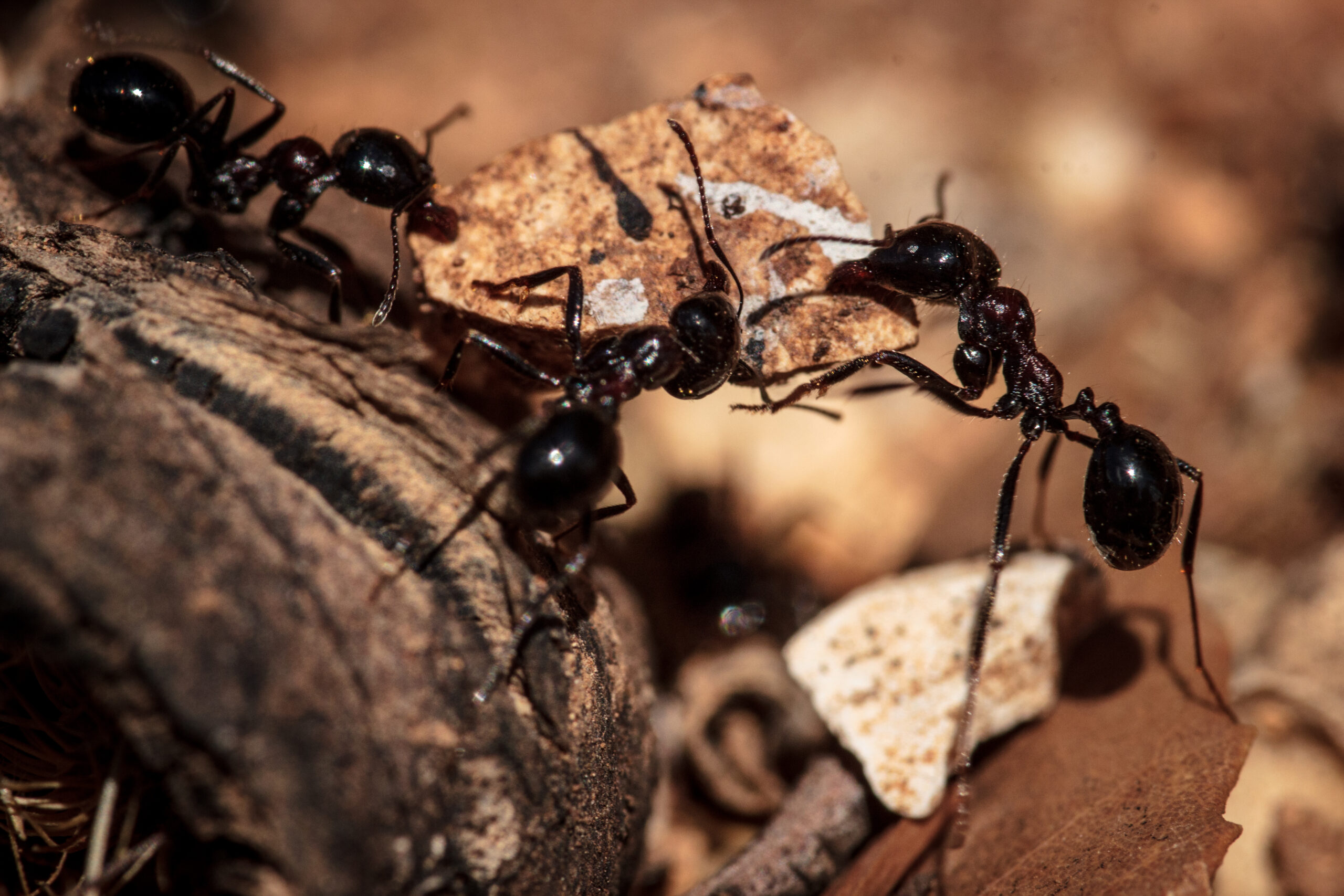
Ants might be small, but their sense of loyalty is immense. Living in highly organized colonies, ants work tirelessly for the good of the group. Each ant has a specific role, whether it’s foraging for food, caring for the young, or defending the colony. This division of labor is essential for the survival of the colony, with every ant showing unwavering commitment to their duties. Their loyalty is evident in the way they cooperate and communicate, ensuring the colony runs smoothly and efficiently.
Ant colonies operate as a single unit, with each ant dedicated to the well-being of the community. Their social structure relies on trust and teamwork, with ants working together to solve problems and overcome challenges. This cooperative behavior is key to their success, as they can accomplish tasks that would be impossible individually. Ants sacrifice their own needs for the benefit of the colony, demonstrating the power of loyalty and unity. By working together, ants show that even the smallest creatures can teach us valuable lessons about loyalty.
13. Bats: Nighttime Navigators With Strong Bonds
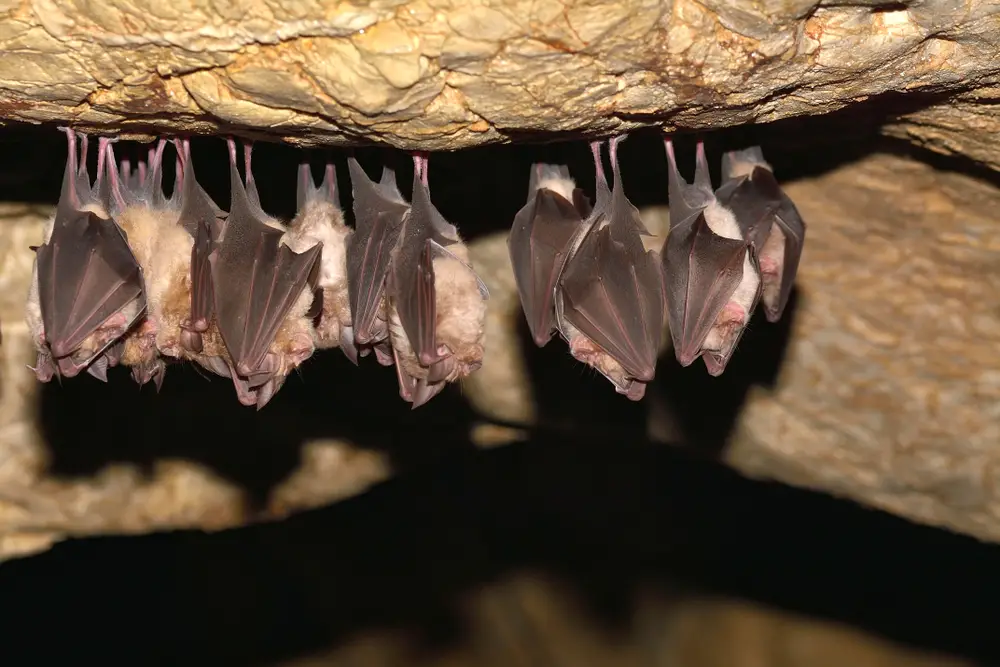
Bats may be nocturnal creatures, but their social lives are far from dark. These flying mammals form colonies that can number in the thousands, yet they maintain strong bonds with their roost-mates. Bats show loyalty by sharing food and keeping each other warm during rest. Their social interactions are key to their survival, as they rely on one another for support and protection. The loyalty they display within their colonies highlights the importance of community and cooperation.
While some bat species form monogamous pairs, others live in large groups where individual relationships are still significant. Bats engage in social grooming, which helps strengthen their bonds and maintain group cohesion. They also use vocalizations to communicate and coordinate with their roost-mates, further solidifying their connections. By sticking together, bats can navigate the challenges of their environment more effectively. Their dedication to one another is a testament to the power of loyalty in even the most unexpected places.
14. Fish Schools: Synchronized Swimmers

Fish may seem like solitary swimmers, but many species thrive in schools that exhibit remarkable levels of loyalty and coordination. Schooling fish move as one, creating mesmerizing patterns that serve both to confuse predators and enhance hunting efficiency. This synchronized swimming requires trust and communication, allowing them to navigate their environment with precision. The loyalty they show to their school ensures their safety and success, as there is strength in numbers. These underwater communities exemplify the benefits of unity and cooperation.
The social dynamics within a fish school are fascinating, with each member playing a vital role in the group’s movement and survival. Fish rely on visual cues and lateral line sensing to maintain their position within the school, demonstrating the importance of communication and coordination. This cooperative behavior not only protects them from predators but also increases their chances of finding food. By working together, schooling fish showcase the power of loyalty and teamwork. Their unity serves as a reminder of the importance of sticking together in a vast and unpredictable world.
15. Rabbits: Burrow Buddies
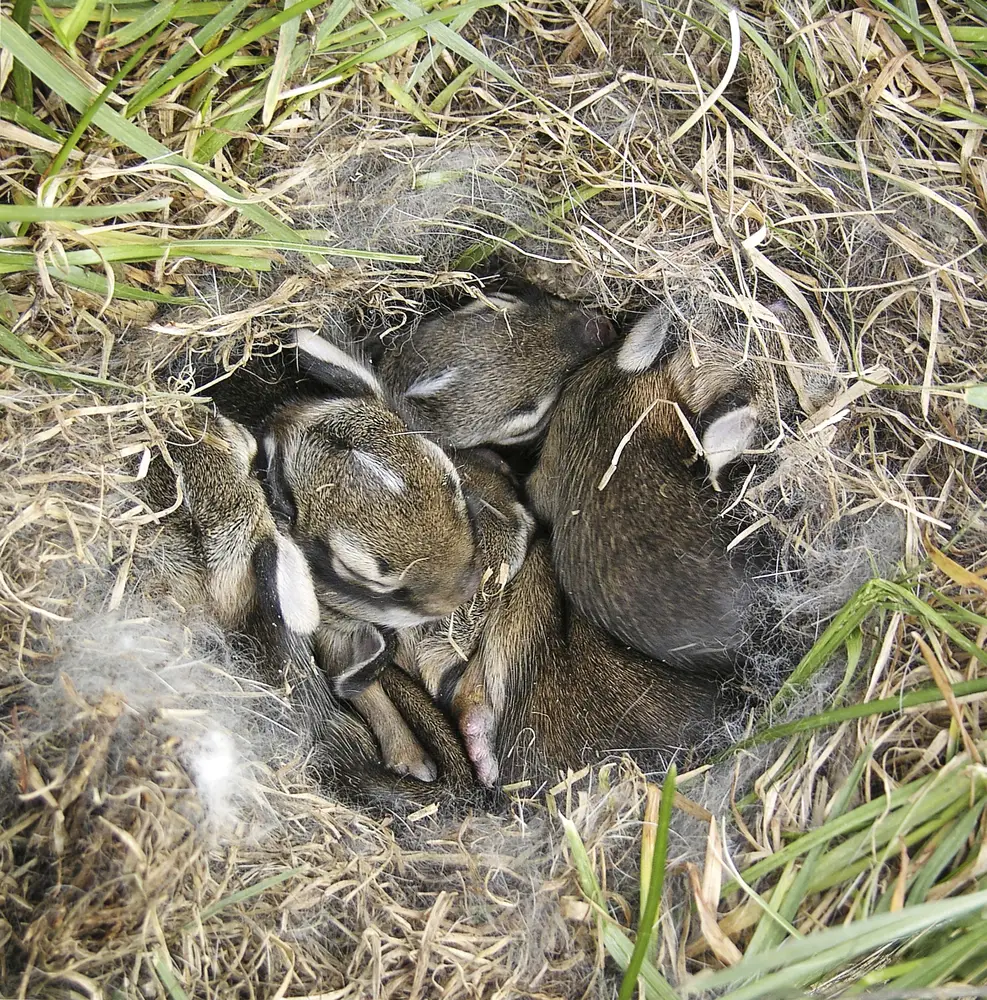
Rabbits are known for their social nature, forming close-knit groups called warrens. These burrow-dwelling communities are built on trust and companionship, with members working together to maintain their home and care for their young. Loyalty is evident in their cooperative behavior, as rabbits take turns standing guard and grooming each other. Their strong social bonds are essential for their survival, providing protection and support within their warren. The loyalty they display to their burrow buddies highlights the importance of community and collaboration.
Within a warren, rabbits establish a hierarchy that helps maintain order and harmony. This social structure relies on mutual respect and cooperation, ensuring that every member contributes to the group’s well-being. Grooming is a key way for rabbits to strengthen their bonds, providing comfort and reinforcing social ties. By living in close proximity, rabbits develop deep connections that enhance their quality of life. Their interactions demonstrate that loyalty is not just about survival but also about building a supportive and nurturing community.
